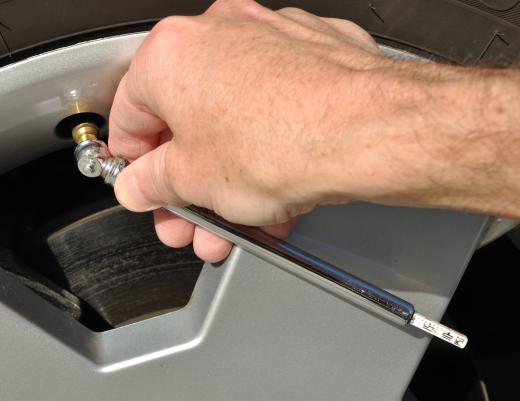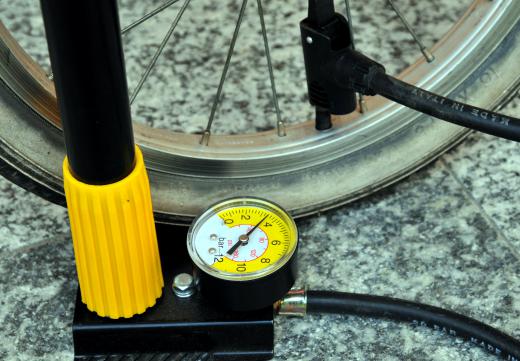A pressure gauge is a measurement device which determines the pressure in a compressed gas or liquid. Pressure gauges are widely used all over the world, for tasks ranging from checking the tire pressure in a car before a trip to monitoring the pressure of various systems inside a nuclear power plant. There are a number of different styles of pressure gauge available, designed for various purposes, and like other measurement devices, these gauges can and should be calibrated periodically to confirm that they are working correctly when they are used for sensitive operations.
Some pressure gauges provide a pressure reading when compared to a complete vacuum, while others measure pressure relative to ambient air pressure. In both cases, the device is often mechanical in nature, with an element inside the gauge moving in response to pressure changes and pushing the part of the gauge which provides a metered reading. Some provide readouts in digital form to make them easier to read, while others stick to analog dials which are directly linked to the gauge.

A very common type of pressure gauge is the Bourdon tube, which consists of a flexible tube which moves in response to pressure. Diaphragms which respond to subtle pressure changes can be used as well. In the tire pressure gauge which may be familiar to those who use wheeled vehicles, pressure is determined with the assistance of a piston which pushes a small spring in response to contact with the pressurized air from the tire.

Pressurized systems can be found in use in a huge number of locations. In a car alone, fuel, lubricant, and brake fluid are all pressurized, along with the air in the tires. In factories, pressurized systems are used in manufacturing control systems of all shapes and sizes. Being able to monitor the pressure in these systems can be very important, as it allows people to identify potential safety threats such as dangerously high pressure, along with system failures like low pressure.

Some pressure gauges can be linked to remote indicator panels which will alert people when a problem develops at the gauge. For example, many modern vehicles have pressure gauges inside the tires which alert the driver when there is a pressure problem, eliminating the need to use a hand gauge to check the pressure. Others can be designed to automatically shut off a system if the pressure falls outside an acceptable range. Pressure gauge designs are also constantly advancing to increase reliability and applicability.
Ever since she began contributing to the site several years ago, Mary has embraced the exciting challenge of being a About Mechanics researcher and writer. Mary has a liberal arts degree from Goddard College and spends her free time reading, cooking, and exploring the great outdoors.

